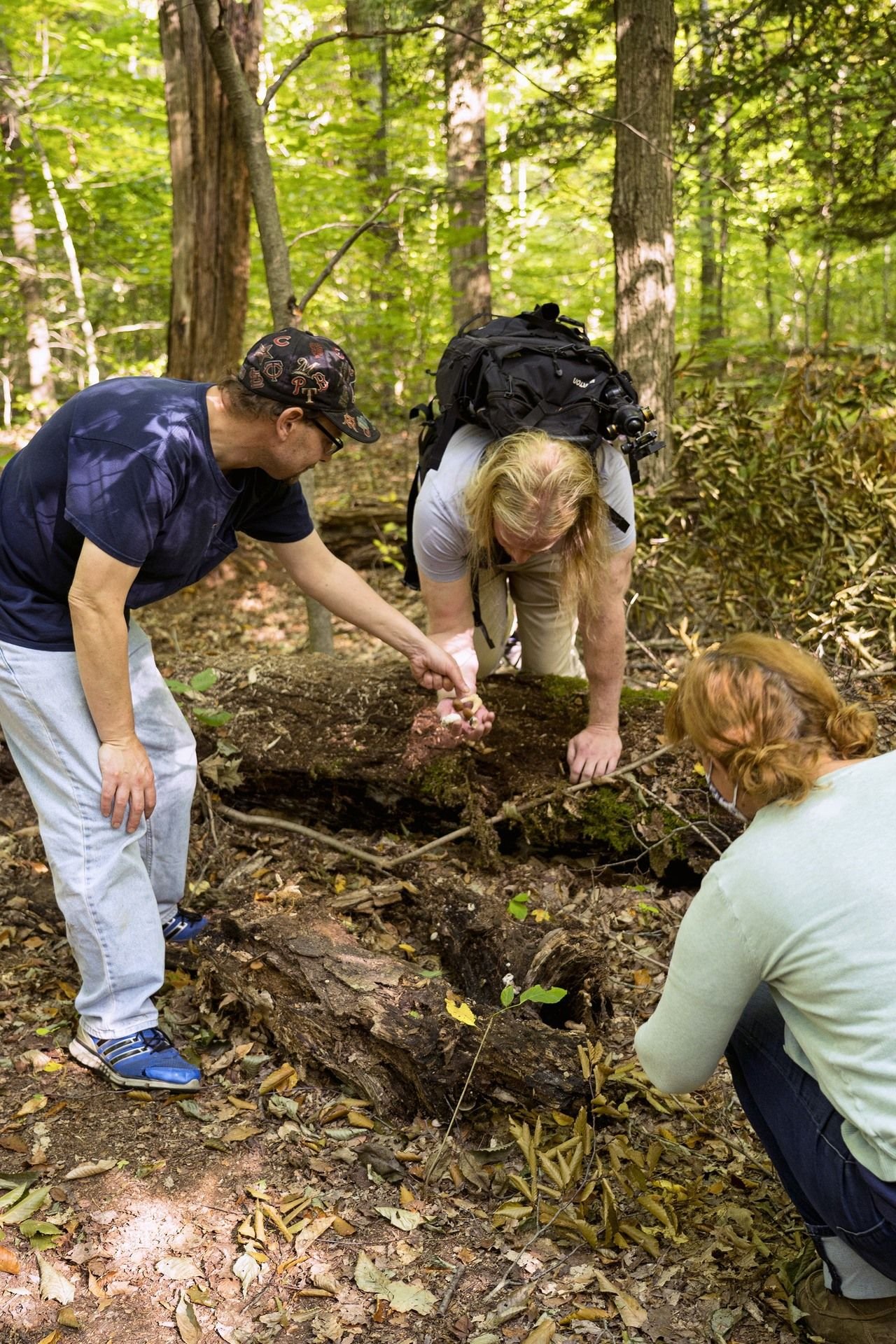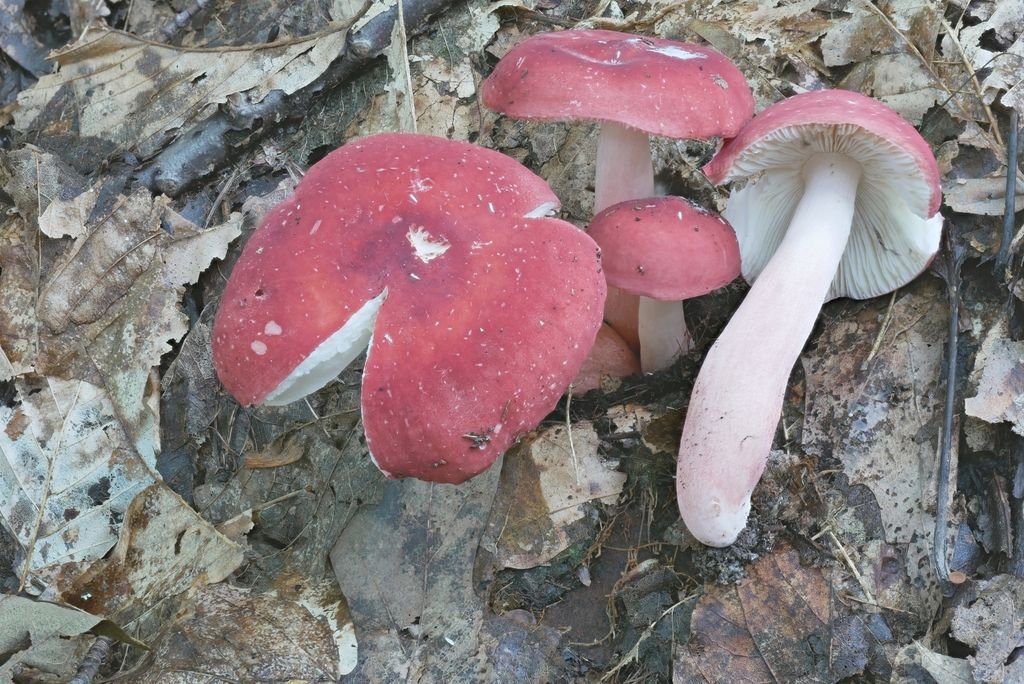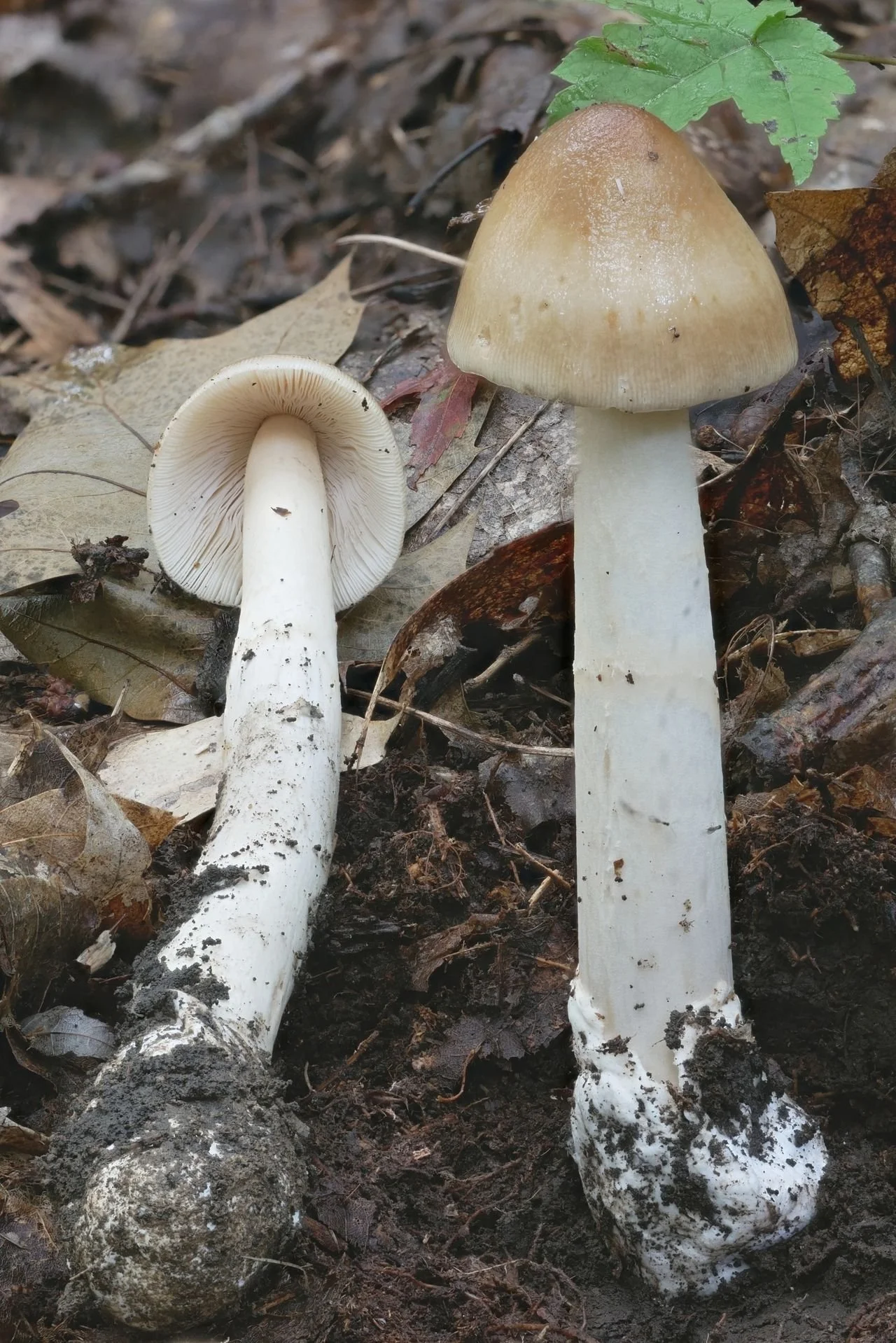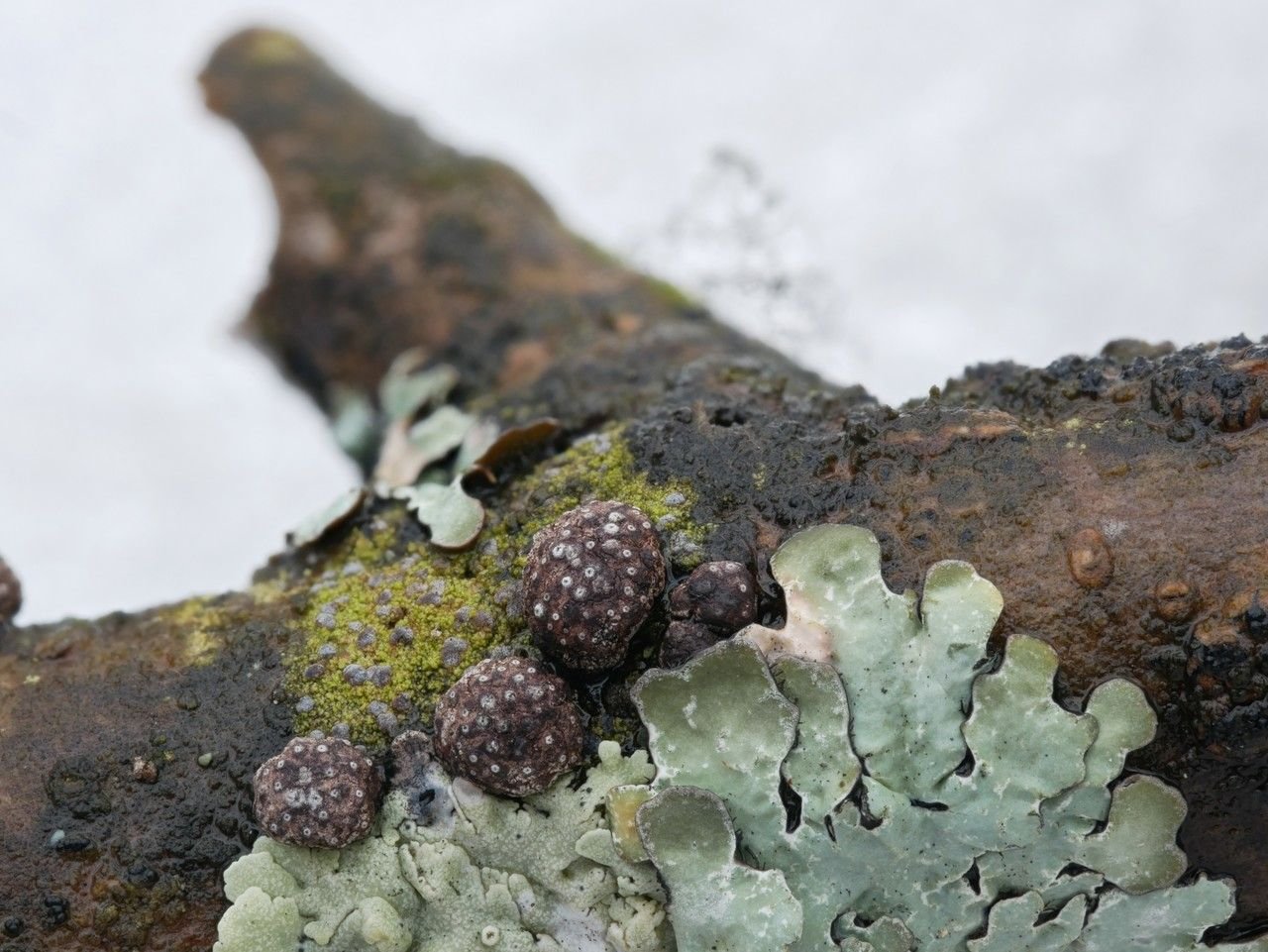A citizen scientist’s journey: the second year
As a keen citizen scientist I try to strike a balance between going out into the field, finding interesting mushrooms to sequence, and doing the work to document and preserve my finds for the fungaria. It means always doing more than what is strictly necessary and constantly adding new tools to my process.
I’m sharing here what I do, in the hope that it will inspire others who are also interested in upping their mushroom game:
Take the best pictures possible
Early on in my mushroom identification journey I had already learned the value of good pictures. High quality pictures are the cornerstone of an observation that’s useful to science. I take in situ pictures with a tripod and a DSLR that I carry everywhere in a durable Burton backpack (I add the brand since good, durable photo carrying bags seem difficult to find). My tripod, camera and cellphone app allow me to take the picture of the same mushroom at different focal planes. Also with the cellphone, I snap a pic for iNat so I have GPS coordinates. I will often include close ups to add necessary morphology for identification purposes.
At home, I use software that focus-stacks. This means the software takes the portion of each photo that is in sharp focus and stitches them all together to render every detail in sharp focus. It’s really brilliant - more detail seems to get captured at any point in the photograph than the sharpest focus portion of any of the individual photos. The downside is the occasional fuzzy halo at the margins of the mushrooms, and when insects march through your photos it requires editing to keep them from making dotted streaks across your photos.
Pay attention to spores
When I get home I look at my finds under the microscope, taking microscopy pictures and making spore measurements. For quite a while I did microscopy work for every collection I made that I was unsure of. This allowed me to have more data to compare with known fungal descriptions.
I make spore prints for some of my finds. Without this step it can be tricky to find enough spores to measure. At last year’s NEMF crust fungi workshop, Dr. Tom Bruns suggested doing this, insisting to not even bother keying out the ones that didn’t have a spore deposit. I still often waste time searching for spores that I could otherwise spend documenting more mushrooms!
Broaden your expertise
I then dry my collections, and try to ID them, at least to class or to family. This means constantly expanding my knowledge to new classes and genera. Since crusts are less familiar to me (as lots of mushrooms are), I am still working on the best path for understanding them. Once I become familiar with the common ones, I move towards sequencing more of them, as I have with other groups of Fungi. With my background as a “field mycologist”, a large part of the reason I use sequencing is to figure out things that I can recognise again.
Sequence fungi of interest, intrigue and importance
Last year was an exciting time for citizen scientists in North America thanks to the Continental MycoBlitz initiative by FunDiS (when it was North American Mycoflora Project). I believe I was second in the amount of specimens collected, bagged and tagged for the MycoBlitz, bested only by Brian Hunt (iNat: @hills47448) who has been a monster of a collector for all the Hoosier Mushroom Society’s iNat MycoBlitzes. He has collected nearly 10% of the specimens that Steve Russell has sequenced so far! It’s been inspiring to watch Steve’s posts on the Facebook page “Indiana Mushrooms” with all of the collecting and sequencing they do. All of the MycoBlitz collections were accessioned into the Purdue University Fungarium.
I collected specimens according to a directive to collect certain types of mushrooms, and my own directive to collect what I think might be unknown, unnamed, or unsequenced, or is unknown to or unsequenced by me. Most of them are hastily identified to species, either by me or by volunteer identifiers for the project (of which I was one) or from the broad user base of iNaturalist. You can see them here; also check out the ones that have been sequenced over here.
Russula rubellipes
A second set I submitted last summer to Steve Russell has returned results. These are more thoroughly documented including microscopic pictures. There are at least seven species I found which have been given a temporary numerical name that includes the letters NY. This is a placeholder for something that’s never sequenced before or can’t be assigned a species-level epithet with confidence. There are a couple reasons for the latter issue: two names could be associated with the same sequence or the same name(s) could be applied to multiple sequences. If I’m really lucky the temporary name will eventually have to be given its own description, as the mushroom is unknown to science.
Mystery amanita 5% to 6% removed from the closest named species
Try and get to species
The real work in assigning a species level epithet instead of a temporary name requires a dedicated search of all descriptions and possible comparison with herbarium specimens and could take several years. Many other specimens I collected in New York have temporary names as well but without the ‘NY’ as they were already known via recent contributions made by researchers from other projects in other states. At least one sequence was a contaminant. That’s not always a bad thing as these are often fungi too, so the sequence is not garbage and is sometimes quite specific. One species, Hypoxylon fraxinophilum, was a first sequence for North America, and only the second sequence ever. Of all the many thousands of sequences on GenBank, another one couldn’t even be placed in a genus!
Hypoxylon fraxinophilum
Make the most of every situation
Part of citizen science for me has always been trying to give back. For example, with the recent shutdown in my state, permission to collect was slow to be granted, so in order to keep busy I decided to hand out some microscopes I had lying around and do Zoom-based microscopy sessions. We are still at it, but only about once a month and only one or two of the participants still show up - coincidentally or not it’s not the folks I passed the microscopes out to. With that being said, 2020 has been about as poor for mushrooms here as for anything else. Everyone that has found anything here has had to put some serious work into figuring out just where it rained and then put a few miles on the odometer.
As we navigate this difficult time my thoughts often turn to the New York Mycological Society. Led by the late, great Gary Lincoff who spearheaded winter mushroom forays into what we all were sure was the least likely place to find mushrooms: NYC parks. What was a limitation for them has undoubtedly turned into a blessing for us all. I hope we all come out of this period with a new perspective on what this project could be, and let’s hear about it! See you out there soon and stay safe, we need all of us.




